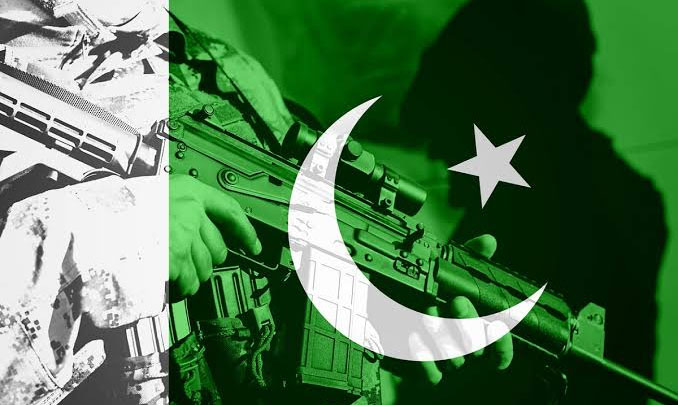The grim situation of increasing drug addiction in Pakistan became evident after the Human Rights commission’s report revealed that 25 per cent of inmates in major jails were drug addicts. This problem runs deep in the country, with many school children turning to drug addiction. The number of people who die of drug addiction is higher than those who get killed in terror attacks. Civil society and international organisations have been calling the drug problem in Pakistan of great concern and seeking immediate preventive measures. Yet, the successive governments failed to control the menace thanks to the complicity of Pakistan’s leaders and officials in the dirty business.
Hard drugs such as heroin and cocaine and other narcotics substances such as hashish, and charas are commonly in use. Earlier, the drug problem was generally identified among poor, homeless people. However, now it has taken the upper middle class into its fold.[1] Now the situation is growing worse with every passing day as no steps are taken for rehabilitation. According to the United Nations Office on Drugs and Crime (UNODC), 7.6 million people in Pakistan were drug addicted in 2013.[2] And this includes around one million addicts who are 16-18 years old and their number is increasing at an alarming rate.

In Lahore alone, 460 drug addicts, who were homeless, died in 2021. And 30,000 drug addicts were in urgent need of medical treatment.[3] In 2020, two million drug addicts were found between the age of 15 to 25 years, most of them college students.[4] Even the number of women taking drugs is on increase. “Easy availability of cheap drugs attracts young girls and women, as it helps them escape the worries and monotony of their lives,” said Peshawar-based psychiatrist Mian Iftikhar Husain.[5] The Interior Ministry of Pakistan accepted the fact that almost 75 per cent of girls and 45 per cent of boys were addicted drug named crystal meth in some leading educational institutes in Islamabad.[6]
Drugs can be procured easily in Pakistani cities and are available at cheap rates thanks to the booming business on the Afghan-Pakistan border.[7] The overall number of drug addicts is set to increase when the UNODC publishes its new report in 2023-24. At least, 50,000 new drug addicts are added to the list of druggies in Pakistan.[8] Besides the mental and psychological harms to addicts, drug use is taking its toll on Pakistan’s economy, find the London-based International Journal of Innovation, Creativity and Change (IJICC).
In 2014, the annual drug trade in Pakistan hovered around USD 2 billion. [9] It has emerged as an important international transport hub for drug trafficking.[10] Even Islamist groups are a part of the drug trade as they provide shelter to drug dealing and transport. They tax drug dealers and use the money to plan attacks and other jihadi activities.[11] Many Pakistani nationals and businessmen were found guilty of supplying drugs to the US.[12] Pakistan’s arch-rival India has alleged that the Pakistan-based radical militant organisations were using drug money to fund terror activities in India-held Kashmir.

Pakistan is one of the regions with the highest consumption of drugs as well as a crucial player in the international smuggling of narcotics substance.[13] Security agencies are involved in the drug business as they provide safe passage for drug dealing and trafficking. Police agencies and top government officials have joined hands that make action against drugs ineffective, reveals the report named ‘Drug Addiction: A review of challenges and solutions’, Published by the University of Balochistan.[14] “If any official takes bold step against those black sheeps then he has to face transfer to other far flung areas or put his life under threat,” reads the report.
Pakistan could not even build a proper rehabilitation centre so far. “The government simply does not have the infrastructure to deal with something like this,” said Talal Zubair, director of Willing Way, a privately-run addiction treatment centre.[15] Pakistani officials and government have accepted that the country was the route of narcotics smuggling and they are struggling to curb it.[16] Pakistan governments failures to provide employment or to help people lift out of poverty have proved crucial factors for people getting attracted to drugs. Moreover, frustration among people over the social conflicts across the country is another factor in the terror-stricken country of Pakistan.[17]
[1]https://www.aboutpakistan.com/blog/drug-addiction-among-poor-people-gone-worse/
[2]https://dailytimes.com.pk/850262/drug-abuse-unstated-challenge-to-the-progress-of-pakistan/
[3]https://tribune.com.pk/story/2342057/drug-use-increases-during-pandemic
[4]https://pssr.org.pk/issues/v4/1/causes-of-drug-abuse-among-university-students-in-pakistan-variation-by-gender-and-drug-type.pdf
[5]https://www.arabnews.com/node/1651441/world
[6]https://blogs.umt.edu.pk/blog/drug-addiction-a-silent-killer-obscuring-the-future-of-youngsters-in-pakistan/
[7]https://dailytimes.com.pk/388347/easy-access-fuels-ever-stronger-drug-addiction-in-youth/
[8]https://www.ijicc.net/images/Vol_15/Iss_8/15839_Saeed_2021_E_R.pdf
[9]https://www.telegraph.co.uk/news/worldnews/asia/pakistan/10705585/How-Pakistan-succumbed-to-a-hard-drug-epidemic.html
[10]https://theprint.in/world/pakistan-has-emerged-as-transit-hub-for-global-narcotic-smuggling/913964/
[11]https://eeradicalization.com/what-role-do-islamist-terrorist-organizations-play-in-drug-trafficking/
[12]https://www.govinfo.gov/content/pkg/CHRG-108shrg90052/html/CHRG-108shrg90052.htm
[13]https://www.researchgate.net/publication/334670685_Drug_Addiction_A_review_of_challenges_and_solutions/link/5d3950dca6fdcc370a5d894f/download
[14]https://www.researchgate.net/publication/334670685_Drug_Addiction_A_review_of_challenges_and_solutions/link/5d3950dca6fdcc370a5d894f/download
[15]https://www.dawn.com/news/1410669
[16]https://www.jpost.com/middle-east/how-terrorist-groups-use-minerals-stones-and-drugs-to-finance-their-ops-560150
[17]https://www.researchgate.net/publication/334670685_Drug_Addiction_A_review_of_challenges_and_solutions/link/5d3950dca6fdcc370a5d894f/download
iffras.org

